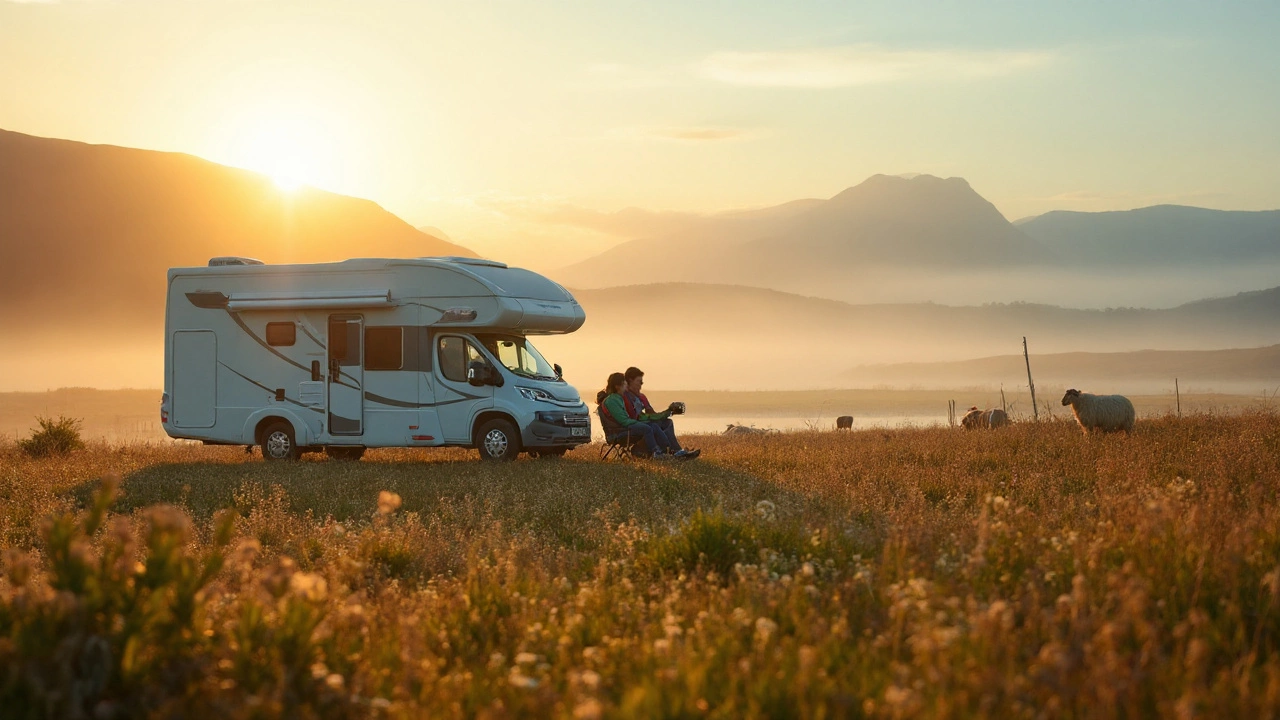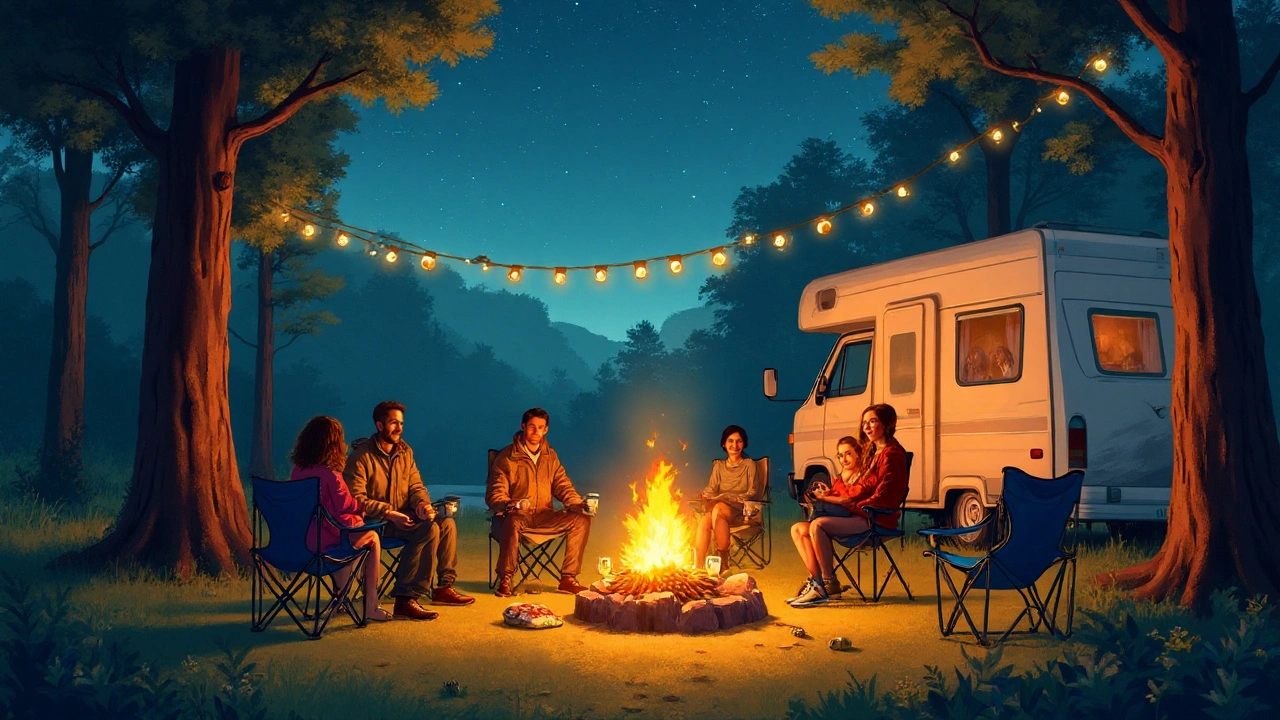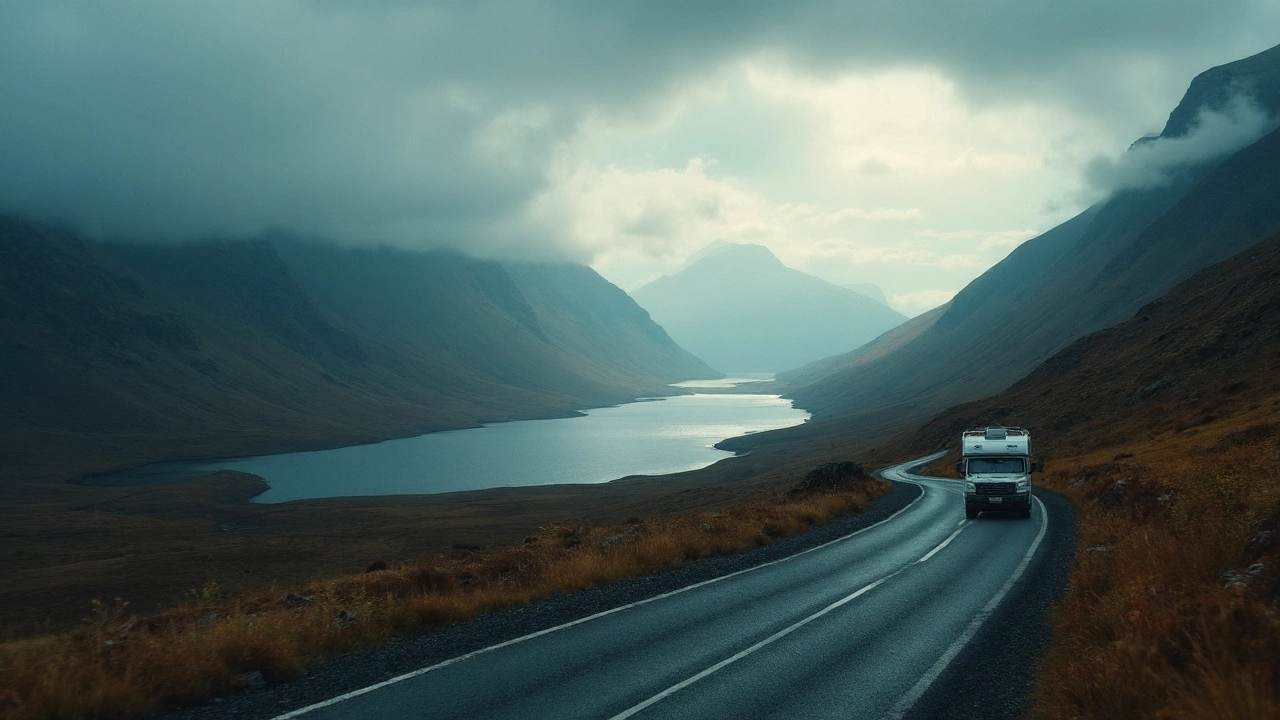Boondocking Explained: Wild Camping for Motorhomes and Adventurers
 Aug, 7 2025
Aug, 7 2025
If the thought of rolling up in a quiet place, just you, your dog, and a killer view, sounds better than stomping through a packed campsite, you’re not alone. There’s been a massive shift in how folks camp, especially post-pandemic when traditional campsites started filling up months in advance. Enter boondocking. No electricity. No water hookups. No designated pitch. Just pure, unfiltered nature—and freedom. But is it as simple as parking wherever you like? Not even close. There’s a lot folks get wrong about boondocking, and more than one story begins with, “I thought it’d be easy until…”
Boondocking Basics: What Is It, Really?
Boondocking, sometimes called wild camping or dry camping, is when you park your motorhome, campervan, or RV anywhere that isn’t a designated site with commercial hookups. It covers everything from parking in a remote forest clearing, to squeezing your Sprinter van behind a sand dune, or spending the night at a quiet layby on the edge of nowhere. The big difference is you’re unplugging, both literally and mentally.
Why do people bother? For some, it’s the peace and “no neighbours” vibe. For others, it’s saving money—especially when campsites in Europe can run anywhere from £20–£50 per night in summer. Safety surprises a lot of first-timers. It turns out, many feel safer wild camping (picking a quiet, smart spot) than in crowded campsites where strangers always seem to walk too close to your awning. One 2023 poll found that 68% of wild campers in the UK rated their sense of security 7/10 or higher—but everyone agreed: where you park makes all the difference.
The root word—"boondocks"—is slang for the remote wild. The term came over from American soldiers in the Philippines in the early 20th century, borrowing the Tagalog word “bundok.” It’s stuck around because it nails the vibe: wild, off-grid, and unapologetically back-to-basics.
| Term | Meaning |
|---|---|
| Boondocking | Camping off-grid, outside formal campsites, no hookups |
| Dry Camping | Another word for boondocking, emphasising lack of water/electric |
| Wild Camping | Common UK term for camping outside marked sites, often similar to boondocking |
But what about the law? In the UK, wild camping isn’t usually allowed unless you’re in Scotland or you have the landowner’s permission. And even in Scotland, you can’t boot up the generator or act like it’s your backyard. Across the pond in the US, you can often camp for free on Bureau of Land Management (BLM) lands. Bottom line—boondocking is legal only in specific places, and rules change fast.

How to Boondock (and Actually Enjoy It)
Success starts before you even unplug. The #1 rookie mistake: thinking you’ll just “figure it out.” Smartphones make it tempting to wing it, but you don’t want to be hunting for a safe spot when it’s getting dark and your fuel light’s on.
Let’s talk gear. You don’t need to spend a fortune, but a few basics will save you a heap of headaches:
- Water storage: You’ll drink more than you think. Even with one dog (Rusty’s a thirsty little guy!), a week in the wild demands more than the standard 20-litre tank.
- Solar panels or a portable generator. They give you a cushion of power for lights, fridge, and charging gadgets.
- Proper toilet setup. Many boondockers use a cassette toilet or portable composting loo. Some rigs come with black tanks, but emptying these can get tricky far from dump stations.
- Waste management supplies: Bags for rubbish, biodegradable toilet paper, and a shovel if you must “go wild”—follow Leave No Trace rules religiously.
- Offline navigation: Download maps on your phone or invest in a paper road atlas. Phone signal is more of a polite suggestion than a guarantee when you’re seriously out there.
- Recovery gear: Think traction mats, tow ropes, and a decent jack if you’re going rural. Getting stuck is not some remote horror story—it happens, especially after rain.
- Good torch (flashlight) and headlamp. Stumbling around in the dark is a rite of passage—just more fun if you’re prepared.
Picking a spot is an art and a science. Apps like Park4Night or Campercontact have changed the game, letting users review wild camps and leave tips. But keep it respectful—not every spot is “official.” Never block access roads or park too close to homes, and if it feels dodgy, trust your gut and move on.
Over time you’ll develop an instinct for what makes a great wild spot: Views (obviously), little sign of litter, clear access for your rig (nothing too muddy or sloped), and some kind of visual cover—think bushes, hedges, even a stand of trees. Camps set back from main roads tend to be quieter and safer. Rolling in just before dusk and heading out early helps you blend in and avoid drawing attention.
One thing that shocks beginners? How quickly your batteries die. In wild settings, running everything as you do plugged in will drain you in a day. Use LED lights, stick to a fridge rather than a full-power freezer, and cook with portable gas or an induction hob if you’ve got decent solar. If you’re in a motorhome, running the engine for a few minutes charges up your leisure battery, but keep it discreet.
And the golden rule? Always leave your spot cleaner than you found it. Litter, forgotten BBQs, and dodgy toilet habits all risk getting wild camping banned for everyone.

Hidden Benefits and Common Challenges of Boondocking
Most people expect a wild sunrise and freedom. They don’t expect how much boondocking changes your whole camping mindset. Suddenly you’re not sticking to a set itinerary—you’re chasing blue skies, epic views, even quiet places to work remotely. In fact, a surge in remote workers has made boondocking mainstream. If you spot a battered Transit van with a Starlink dish, chances are there’s a coder inside living their best life with a view of rolling moorland.
Saving money is no joke—boondockers report slashing their camping costs by 50% or more. Take the UK: most wild spots cost nothing, and sometimes you can even park by a local pub if you buy a meal. Motorhomes, especially, save hundreds over a month, which adds up on long tours.
But don’t skip over the headaches. Water and power are always tight. Some wild campers use less than 10 litres of water a day for everything—cooking, washing, even brushing teeth. You develop techniques: “navy” showers (rinse, soap, rinse), cleaning up with microfibre cloths, or doing dishes with minimal water. Every drop matters.
Trash disposal takes thought, especially in rural spots with no bins. You end up carrying a bin bag in your shower tray, stashing it until you hit town. Some boondockers cut down on waste by switching to reusable dishware, shopping with less packaging, and prepping food that won’t create stinky scraps (leftover curry, anyone? Not so fun after three days in the heat).
Bad weather is a wild card. Wind shaking the van at night, rain turning dirt roads to soup, or heatwaves making your dog pant like he’s run a marathon. Sometimes you park up and realise you’ve got patchy mobile signal and half a power bar left. These moments force quick thinking. Carrying a backup power bank, learning which windows to open or cover, and keeping your water topped up—these small habits keep things comfortable.
And then there’s social life. Think boondocking means endless solitude? Not always. At popular wild spots, there’s a friendly scene—late-night chats with fellow travellers, impromptu campfire songs, swapping tips about the next epic park-up. Still, etiquette matters. Don’t roll up blasting tunes or start running your generator at 2am. A little respect goes a long way, especially in spots where wild camping rights hang by a thread.
| Common Boondocking Challenges | Typical Solutions |
|---|---|
| Water runs out | Carry collapsible jerry cans, top-up at fuel stations or public taps |
| Batteries drain too fast | Upgrade lighting, add solar, monitor usage |
| Trash builds up | Plan town trips, pack it out, minimise packaging |
| Safety worries | Park discreetly, travel in pairs, trust gut instincts |
| Lousy weather | Check forecasts, carry recovery gear |
With wild camping growing fast, staying on the right side of rules is key. Many UK national parks let you wild camp if you follow the rules: Arrive late, leave early, don’t light fires, and keep group sizes small. The boondocking scene depends on everyone playing by the rules—nothing gets wild camping banned faster than messy campers or noisy parties. Remember, leave no trace isn’t just a saying, it’s survival for those of us who love waking up somewhere wild with no one else in sight.